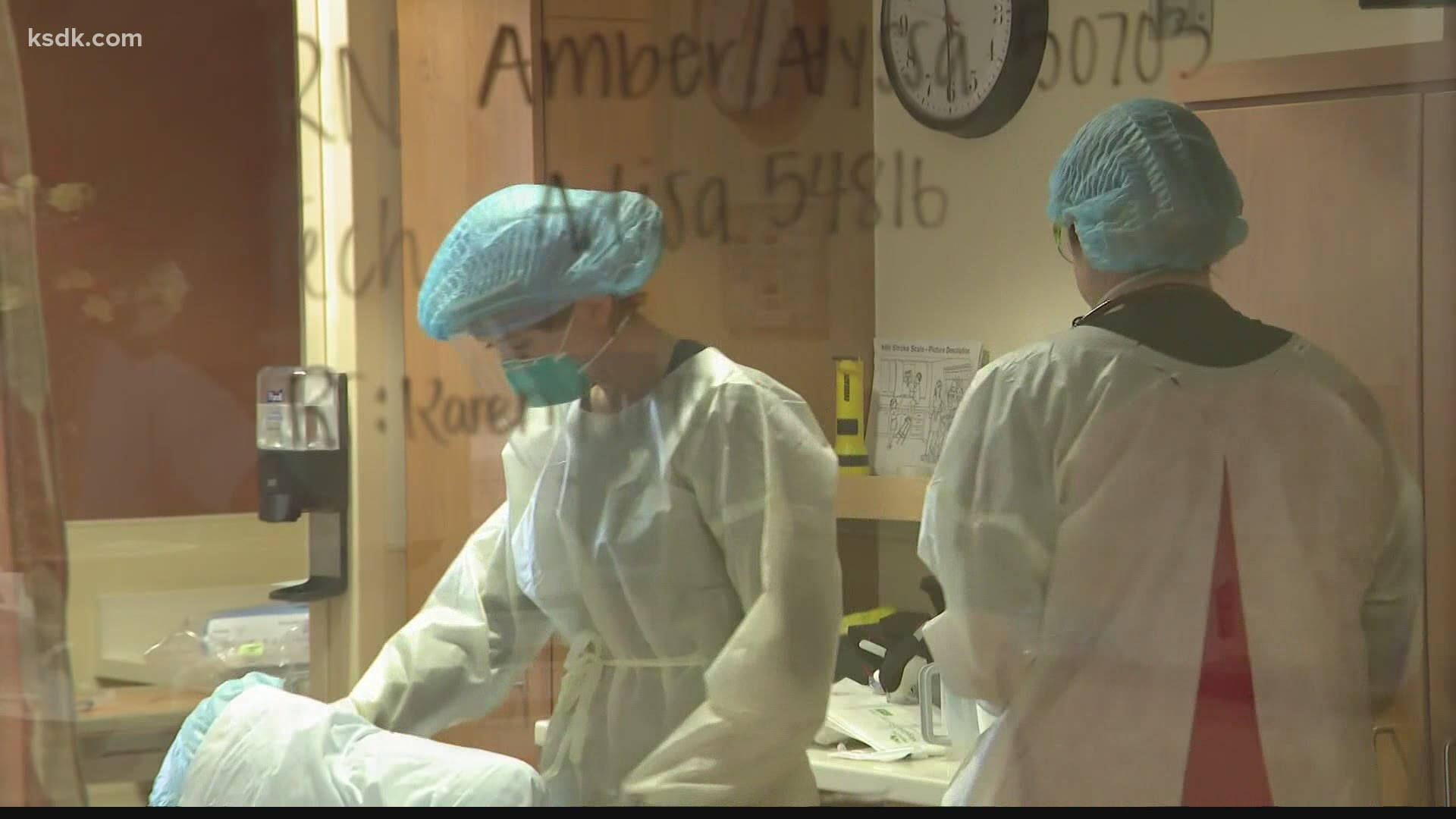ST. LOUIS — Missouri now leads the nation with the highest rate of new COVID-19 infections as vaccinations lag and the Delta variant takes hold.
One person in every 1,349 people in the state was diagnosed with COVID-19 from June 13 to Sunday, new data shows.
The north-central and southwest part of the state are driving the surge, said Lisa Cox, spokeswoman for the Missouri Department of Health and Senior Services.
While 53.3% of the population of Americans have initiated vaccination, according to the U.S. Centers for Disease Control and Prevention, most southern and northern Missouri counties are well short of 40%. And a handful of southern Missouri counties have fewer than 20% of residents vaccinated.
Data from the state health department’s COVID-19 dashboard showed that the number of people hospitalized with the virus in southwestern Missouri had risen 72% from 154 at the beginning of the month to 265 on Friday. Meanwhile, hospitalizations rose statewide over that same period by nearly 11% to 747.
One reason is that the Delta variant, which is more infectious and potentially more deadly than other variants, has become dominant around Springfield and in much of southwest Missouri, Kendra Findley, administrator of community health and epidemiology with Greene County, said last week.
Health officials in Webster County are using wastewater testing to determine what variants make up the spread in their community. In the most recent sample, they found 96% of the COVID-19 cases were the Delta variant.
While appearing on CBS News' Face the Nation, former FDA commissioner Dr. Scott Gottlieb identified Missouri and three other states where health officials are seeing an increase in coronavirus transmission.
"So Connecticut, for example, where I am, shows no upsurge of infection, but Mississippi, Alabama, Arkansas, Missouri show very substantial upsurges of infections," Dr. Gottlieb said. "That's based entirely on how much population-wide immunity you have based on vaccination."
The surge in cases will impact bigger cities like St. Louis and Kansas City. Some hospitals have already started sending their sick patients to alternative cities.
"It has come to that," said Katie Towns, the assistant director of the Springfield-Greene County Health Department. "There will probably be more people that are sent to alternative cities because we're in the middle of the surge, and I'm not sure when it will end."
A spokesperson from Mercy Hospitals in St. Louis said that they have yet to see any transfers from Mercy in Springfield, but it was unclear Monday if CoxHealth had sent patients to the state's larger hospitals.
"Within our community, we have two very large healthcare systems -- CoxHealth and Mercy," said Towns. "Between the two of them, they have chosen different paths to deal with how they are going to be able to receive and give care."
Counties in the heavily traveled route from Branson to Lake of the Ozarks are all seeing COVID surges, and it is a concern for municipal leaders as they host vacationers during the summer tourism season. Towns said it is a reality that many people will consider the numbers when they make travel plans.
"That's why we continue to look for ways to get people vaccinated," said Towns. "Because it is the best tool we have--the best defense that we have is to get people vaccinated."
The county with the highest vaccination rate was Boone County, home to the University of Missouri, at 44 percent. The county with the lowest vaccination rate was Pulaski County, at 11 percent, home to Fort Leonard Wood.
In the St. Louis area, hospitalization rates have remained low, averaging a little more than 100 COVID-19 patients per day.

